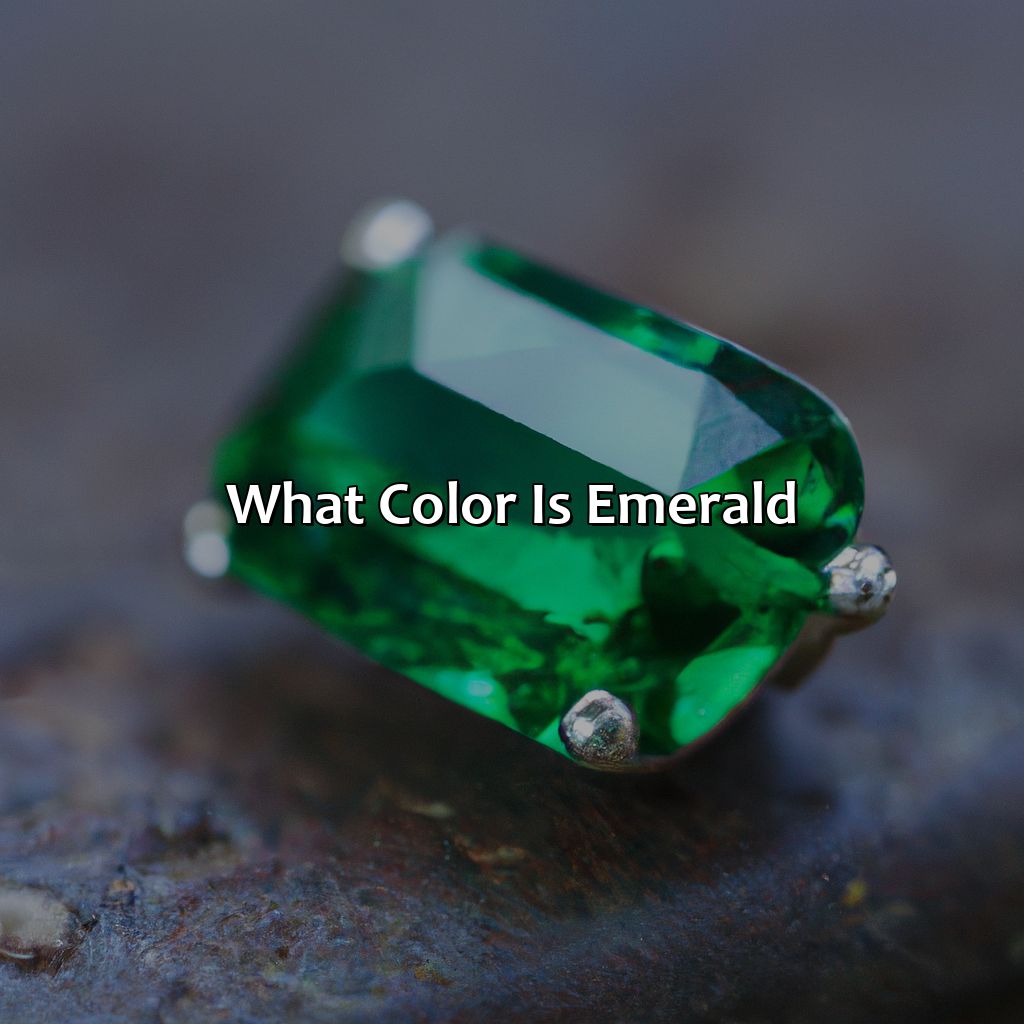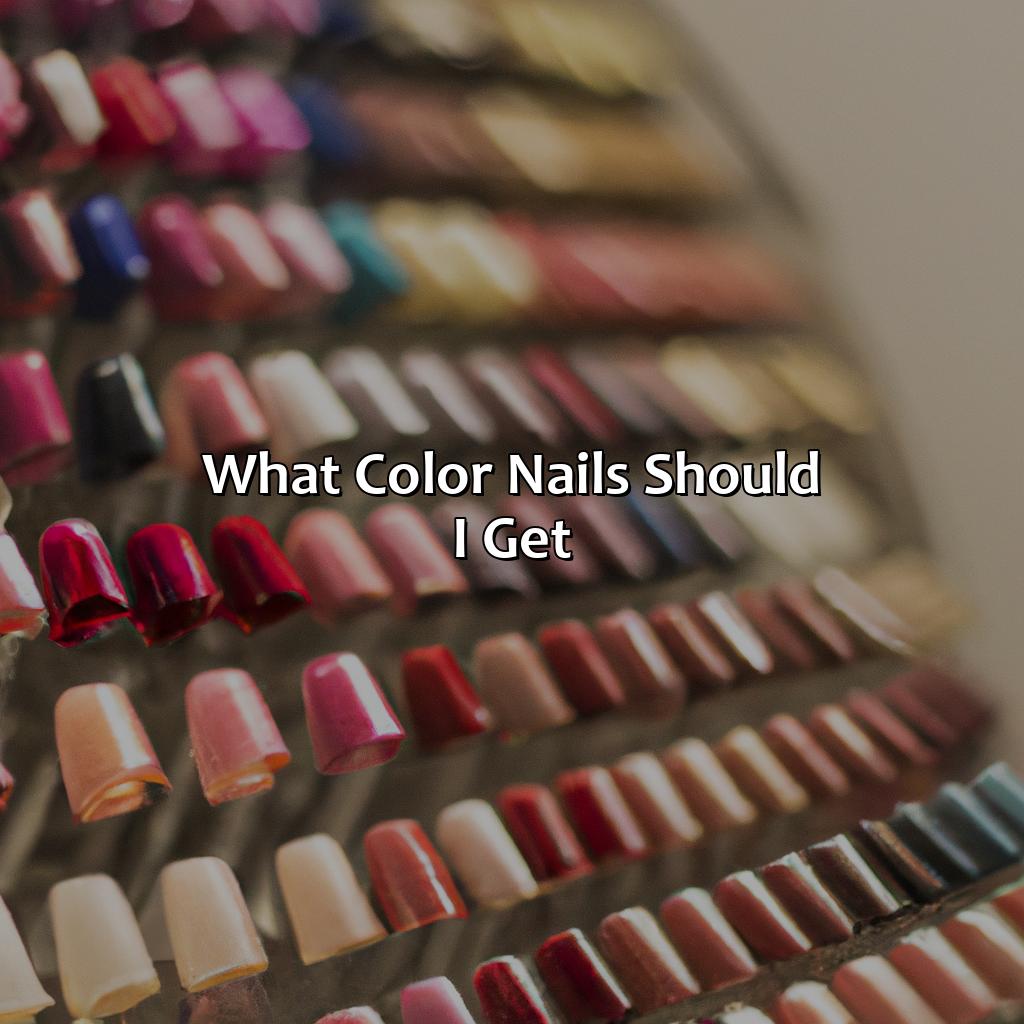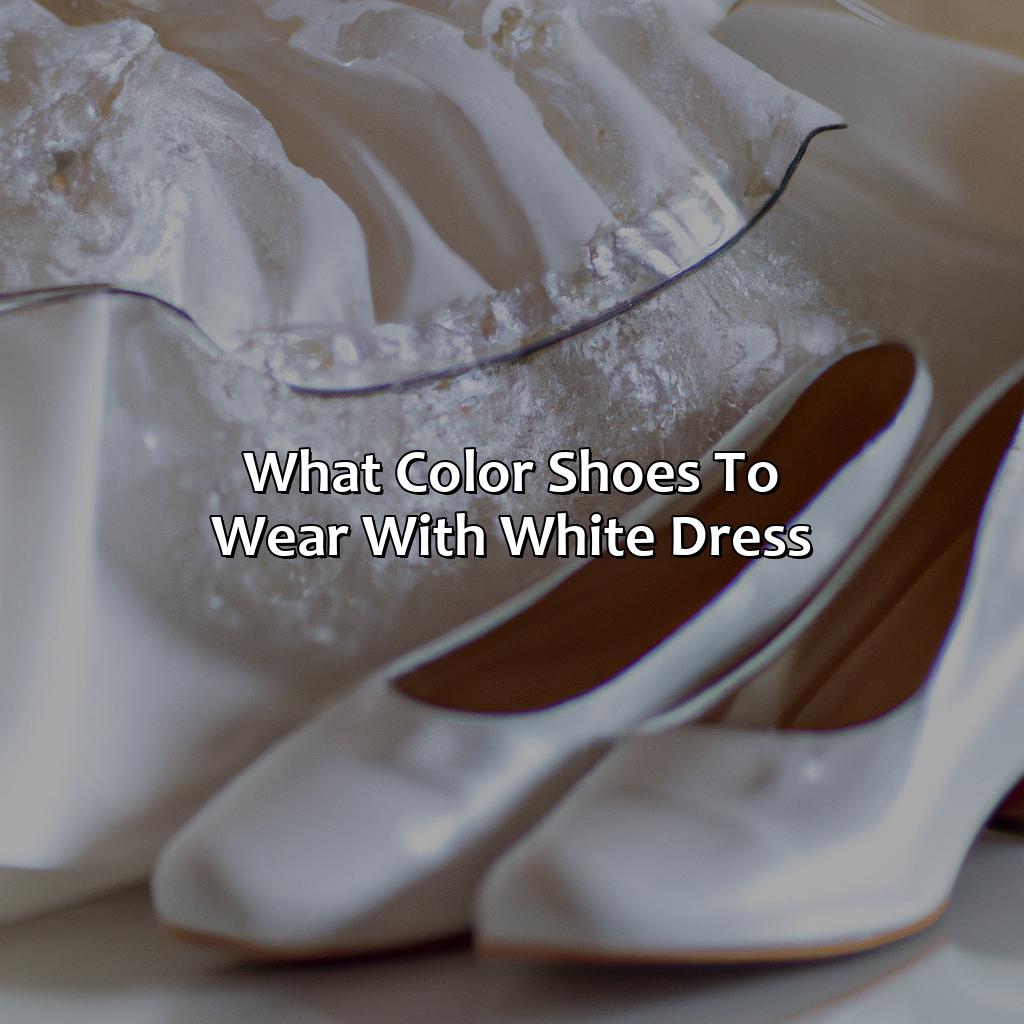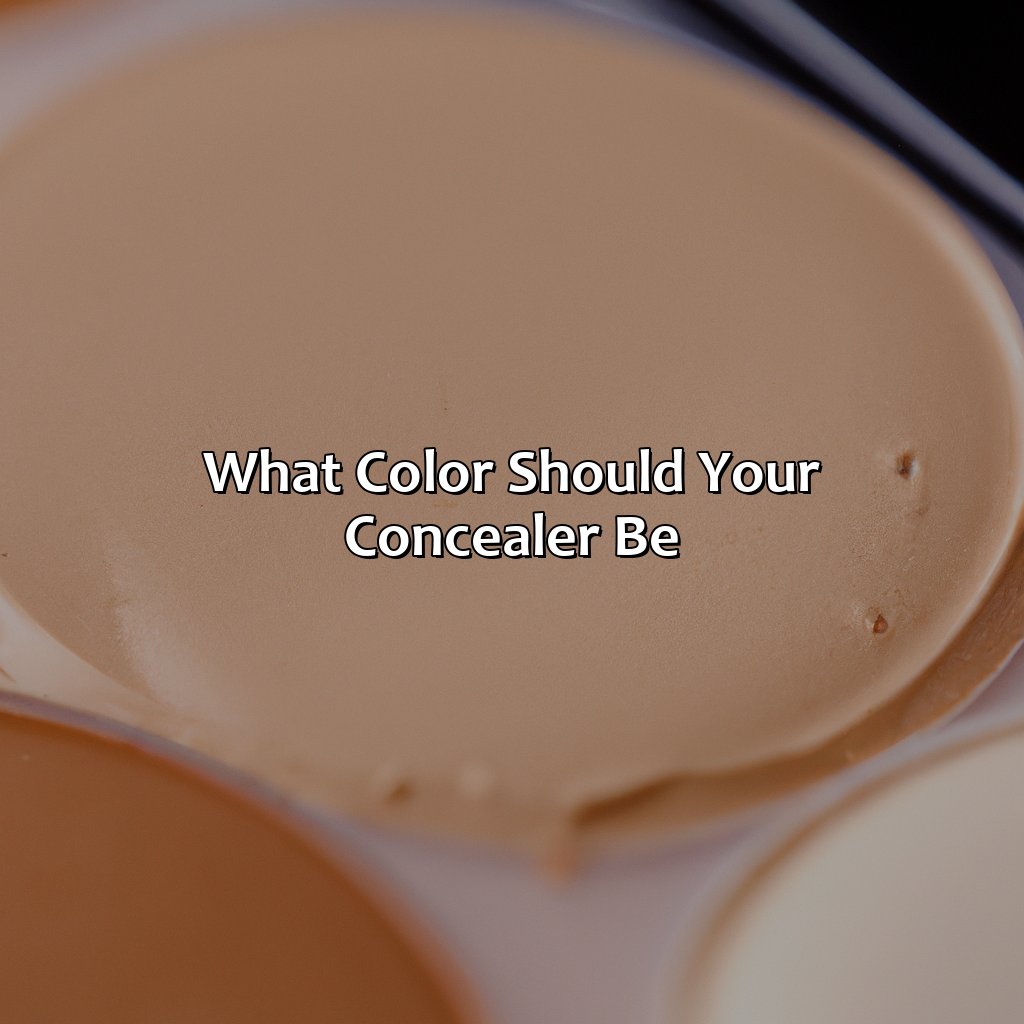Key Takeaway:
- Indigo color is a color between blue and violet in the visible spectrum. It has historically been important as a natural dye extracted from the leaves of certain plants, and later synthesized for industrial production.
- The hue of indigo color is primarily defined by its wavelength and saturation, which can range from a deep purplish blue to a lighter shade of blue. When mixing with other colors, indigo can provide a rich, deep tone that is distinct from regular blue.
- Indigo color has been widely used for both traditional and modern applications. Traditional uses include textile dyeing and spiritual practices, while modern uses include fashion, home decor, and paint colors. The unique shade and versatility of indigo make it a popular choice for various design and art projects.
Definition of Indigo Color
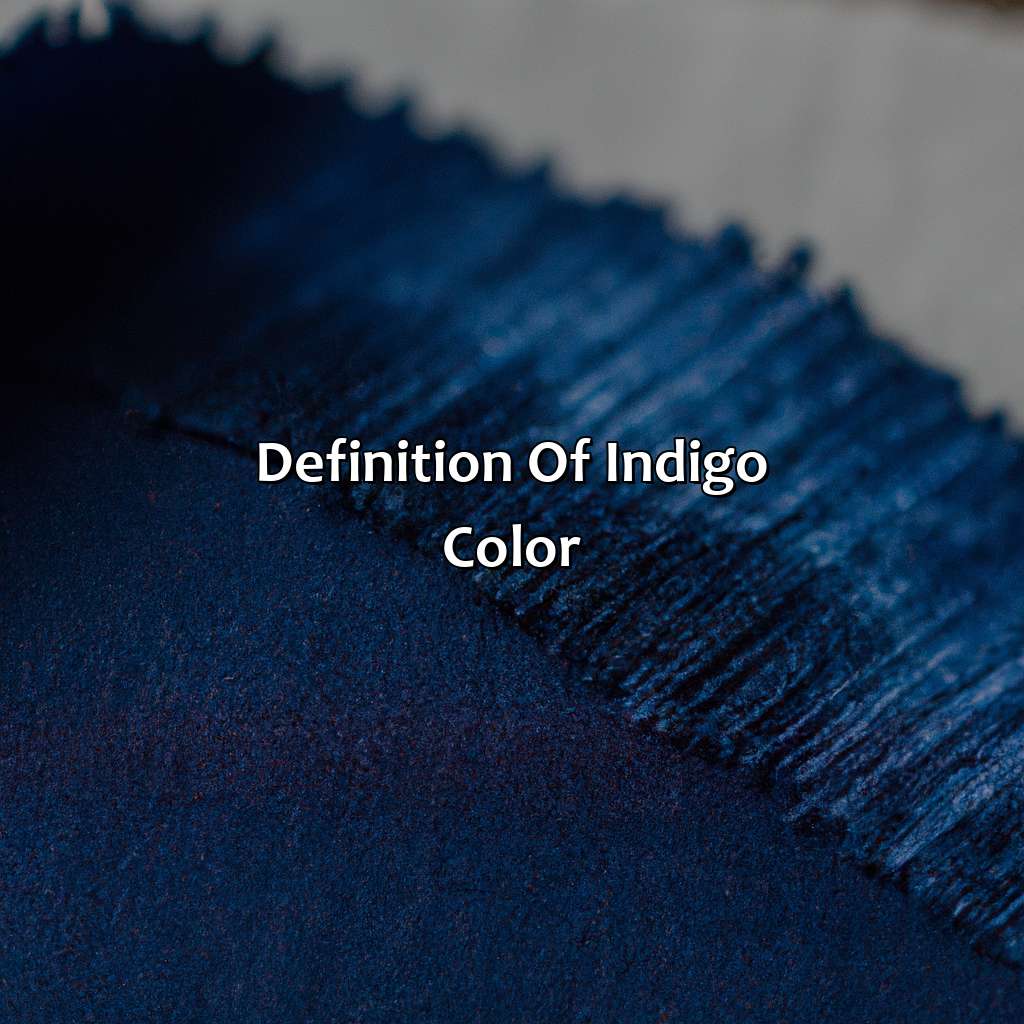
Photo Credits: colorscombo.com by Lawrence Campbell
Gain insight into indigo color by understanding its definition. Discover its history and the science behind it. Trace the origins of indigo from the indigo plant. Learn how it became part of human history. Investigate the scientific properties of indigo – both natural and synthetic indigo dye. Uncover the science behind how the color is created.
Historical Significance of Indigo
Indigo color has a long and rich history, with its significance dating back to ancient civilizations. The dyeing of fabrics with indigo can be traced back to the Indus Valley Civilization, where it was used extensively for clothing. The use of indigo continued through the centuries, and it became a valuable commodity for trade between Asia, Europe, and Africa. The indigo plant played an essential role in society as it provided a source of blue dye that was highly prized.
Indigo was also significant during the American Revolution. British taxes made imported textiles unaffordable for colonists, forcing them to find alternative sources of fabric. This led to farmers growing indigo plants and producing their own blue dye, which helped fuel the colonists’ independence movement.
In India, indigo farming was associated with exploitation and oppression during colonial times, leading to Mahatma Gandhi protesting against it as part of his campaign for independence.
Overall, indigo color holds historical significance in various cultures worldwide and has played a crucial role in different periods throughout history. Understanding its history provides us with insight into the cultural practices and economic systems of past times while highlighting its relevance even today.
The science behind indigo color may not be rocket science, but it sure dyes a good story.
Science behind Indigo Color
Indigo color is a deep, rich hue that has fascinated people throughout history. The science behind this color relates to the chemical compounds present in indigo dyes, which are extracted from plant sources. These compounds absorb light at certain wavelengths, giving rise to the unique blue-violet color of indigo.
The process of creating indigo dye involves several chemical reactions that release hydrogen gas and produce intermediates such as leuco indigo. Natural sources of indigo, such as those extracted from the leaves of the Indigofera genus of plants, have been used for centuries.
Today, synthetic forms of indigo dye are more commonly used due to their ease of preparation and lower cost. However, natural indigo dyeing remains an important craft in many parts of the world.
Interestingly, scientists have also studied the potential health benefits of using natural indigo compounds in skincare and other applications. From ancient times to modern day uses, indigo color continues to captivate people around the world.
Indigo color is so versatile it can go from deep and moody to soft and dreamy, proving that there’s more to this shade than just being blue.
Characteristics of Indigo Color
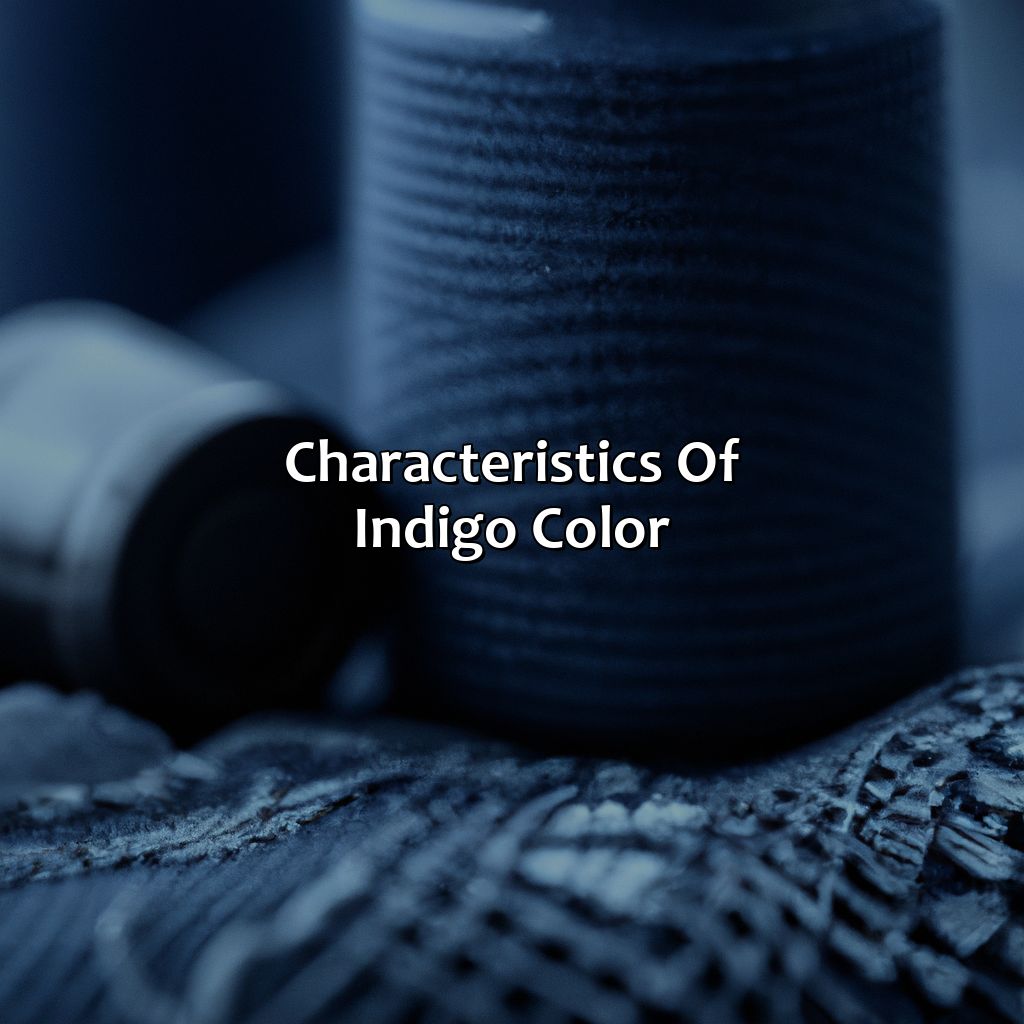
Photo Credits: colorscombo.com by Bradley Scott
Gaining insight into indigo? Let’s start by looking at its hue, saturation, and color mixing. We will discover the unique properties of this color. From hue to saturation, and how it interacts with other hues when mixed. Come with us as we explore the sub-sections of this enlightening chat!
Hue and Saturation
Indigo color possesses a unique combination of hue and saturation that distinguishes it from other colors. It encompasses a spectrum of shades ranging from blue-violet to deep navy, offering a diverse range for development.
The hue of indigo lies between the primary colors blue and violet. It typically exhibits an intense wavelength between 450–500 nm with low levels of brightness or luminance. The saturation or chroma level of indigo can vary widely depending on the amount applied and its intensity.
Indigo’s unique characteristics make it a popular color for many uses—from traditional textile dyeing techniques to modern applications in fashion, art, interior design, and commercial products. Its rich and calming tone also makes indigo color versatile in creating various design options that are aesthetically pleasing.
Historically, the versatility of this elegant and captivating shade has gained resounding recognition across different parts of the world. The dye is associated explicitly with denim fabric production in America during the mid-19th century industrial boom, where they utilized natural sources like woad or synthetic dyes derived from petroleum.
Today, modern advancements have allowed us to produce an array of indigo variations with synthetic derivatives that can meet different preferences while retaining its trademark hue and saturation characteristics.
Mixing indigo with blue? Might as well mix oil and water while you’re at it.
Color Mixing with Indigo
Indigo color mixing produces unique results as it is not just a simple blue color. The final color depends on the quantity and type of pigments used in combination with indigo. Mixing indigo with white produces a beautiful pale blue hue, while black pigment mixed with indigo creates an almost navy-like shade. Indigo versus blue presents many different shades on the spectrum, depending on how much each pigment is mixed together.
Moreover, mixing indigo with other colors can yield a range of exciting options. Combining it with green in different quantities can produce striking jungle-like hues. On the other hand, blending red with indigo creates subtle yet vivid purple shades that are perfect for professional or artistic designs.
It’s interesting to note that when mixed with orange or yellow, the resulting pigmentation ultimately looks brownish rather than anything resembling blue or purple shades of and that’s how the traditional Color-wheel was first created.
A true fact about mixing indigo color is that it has long been prized as an ingredient in masterpieces by famous painters such as William Turner and Leonardo da Vinci for adding depth and mood to their works.
Indigo color: the traditional choice for dyeing fabrics, and the modern choice for making your wardrobe look cool.
Uses of Indigo Color
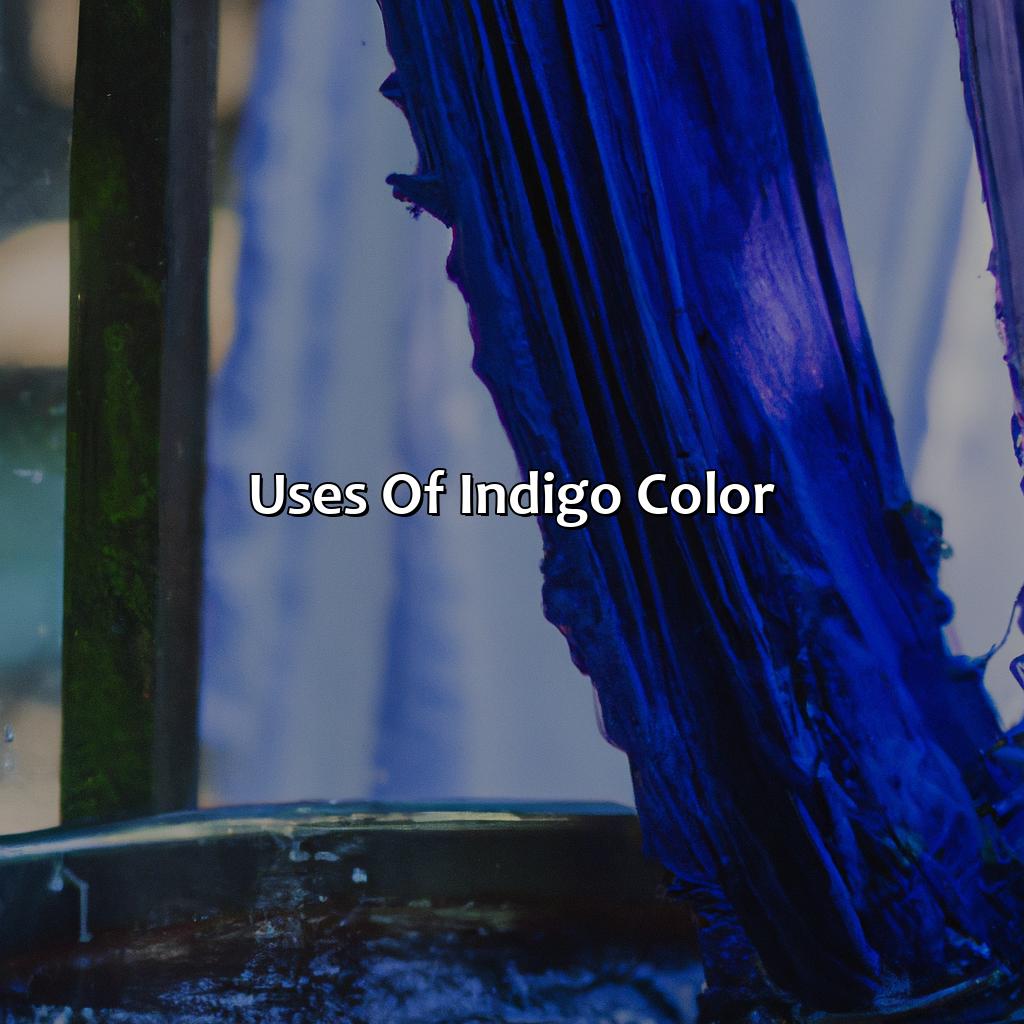
Photo Credits: colorscombo.com by Justin Williams
We have two approaches to explore the uses of indigo color. Traditional uses focus on its history, dyeing, and cultural importance. Modern uses, however, are more extensive. They include indigo trends in fashion, home decor, and paint.
Traditional Uses
Indigo has been used for various purposes since ancient times. The significance of the color and its uses can be traced back to centuries ago.
| Traditional Uses | |
|---|---|
| Textile dyeing | Medicinal purposes |
| Ceremonies and rituals | Cosmetics |
| Food coloring | Art and decoration |
Indigo has been widely used for textile dyeing in many cultures around the world. It was also used in traditional ceremonies and rituals as it was believed to have healing properties. Indigo was used as a cosmetic product for hair and skin care as well. It was also used as a food coloring agent due to its natural blue-green pigment, primarily present in spirulina.
Indigo dyeing techniques vary from culture to culture, but the traditional methods generally involve a fermentation process that develops indigo pigment for dying fabric or other materials.
Pro Tip: Always research on the traditional indigo dyeing processes before attempting any experimentation with synthetic dyes.
Indigo isn’t just a color, it’s a lifestyle choice.
Modern Uses
Indigo color has become a popular trend in recent years for modern uses. It is being used in fashion, home decor, and even paint. Indigo is a versatile color that can give a sophisticated and calming effect to any design or art piece.
In fashion, indigo is used to create denim jeans, jackets, and shorts. It gives a classic and timeless appearance to the outfits. In home decor, indigo can be used in bedding, curtains, throw pillows, and rugs. It can complement any style from bohemian to modern minimalist.
Indigo paint is also being utilized by interior designers as an alternative to traditional blue shades. The depth of indigo gives a more dramatic effect compared to other blues. It is often paired with neutral or metallic accents for a chic look.
There are several unique ways of using indigo color in different art forms such as tie-dyeing techniques on fabric or paper, dyeing wood or leather with natural or synthetic indigo dyes.
If you want to incorporate indigo into your own creations, experiment with mixing it with other colors like white or browns for different shades or pair it with complementary colors such as ochre or coral for striking combinations.
Overall, the use of indigo color has expanded from its traditional uses into modern designs in fashion and home decor. Try incorporating this versatile shade into your own artwork or design projects for a timeless yet chic look. Whether it’s natural or synthetic, indigo dyeing is all about achieving the perfect shade of blue.
Indigo Dyeing Techniques
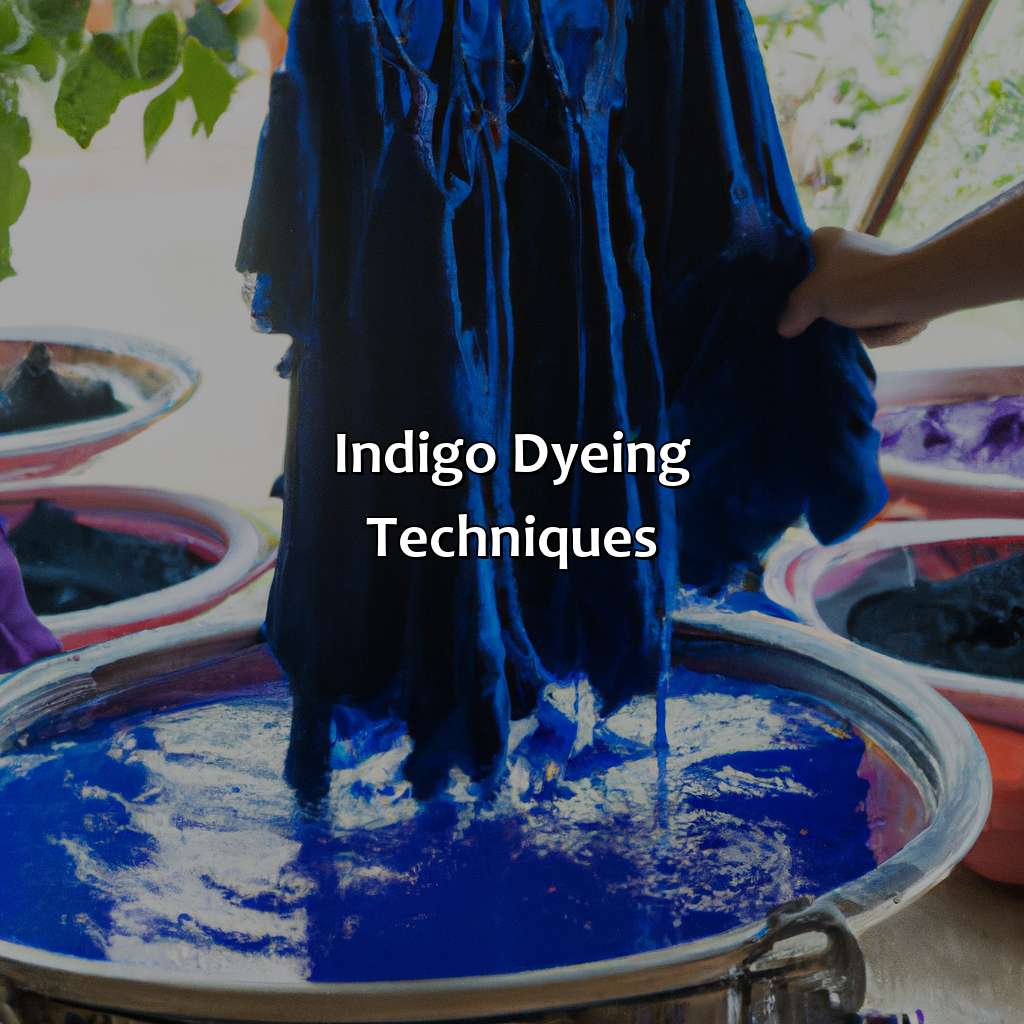
Photo Credits: colorscombo.com by Christopher Thompson
Want to grasp the beauty of indigo? To gain insight into this color, you must get familiar with indigo dyeing techniques. For creating the most exquisite indigo apparel, two primary dyeing strategies are utilized. Natural indigo dyeing requires using the natural indigo plant to dye the fabric. Synthetic indigo dyeing, on the other hand, involves using chemically-made synthetic indigo.
Natural Indigo Dyeing
Traditional techniques involve fermenting the plant material with water and adding lime to extract the pigment. The fabric is then dipped multiple times in the dye vat to achieve the desired shade. The result is a rich and complex color with variations in tone and depth throughout the fabric.
Using natural indigo also supports sustainable farming practices as it can be grown without the use of synthetic pesticides and fertilizers. Additionally, it creates a beautiful finish that cannot be replicated with synthetic dyes.
A study by Alam et al (2017) demonstrated that natural indigo dyes have superior color fastness compared to their synthetic counterparts, indicating that they retain their vibrant color for longer periods.
Indigo dyeing has a long history that dates back thousands of years, starting with ancient civilizations such as those in China and India. Its popularity soared during medieval times when it was traded through Africa and Europe. Today, natural indigo dyeing continues as an art form celebrated by traditional art communities worldwide.
Indigo clothing: now with more synthetic goodness than ever before.
Synthetic Indigo Dyeing
Synthetic indigo dyeing involves using synthetic dyes to achieve indigo color in textiles.
The table below compares natural and synthetic indigo dyeing techniques:
| Natural Indigo Dyeing | Synthetic Indigo Dyeing | |
|---|---|---|
| Method | Fermentation using plant leaves | Chemical reaction with petroleum-based ingredients |
| Cost | Expensive due to labor-intensive process | Cheaper due to mass-production |
| Sustainability | Eco-friendly and biodegradable | Non-biodegradable and pollutes water |
| Color Fastness | Less color fastness, fades over time | More color fastness, retains color for longer duration |
It’s important to note that synthetic indigo dyeing has a negative impact on the environment, unlike natural indigo dyeing.
Indigo clothing made from synthetic dyes dominate modern fashion due to cost-effectiveness. However, it is crucial to be aware of the incredible damage this practice inflicts on our planet.
Make an informed decision next time you shop for indigo clothing by opting for organically dyed options.
Indigo color has more shades than a paint sample book and more combinations than a Rubik’s cube.
Indigo Color Variations
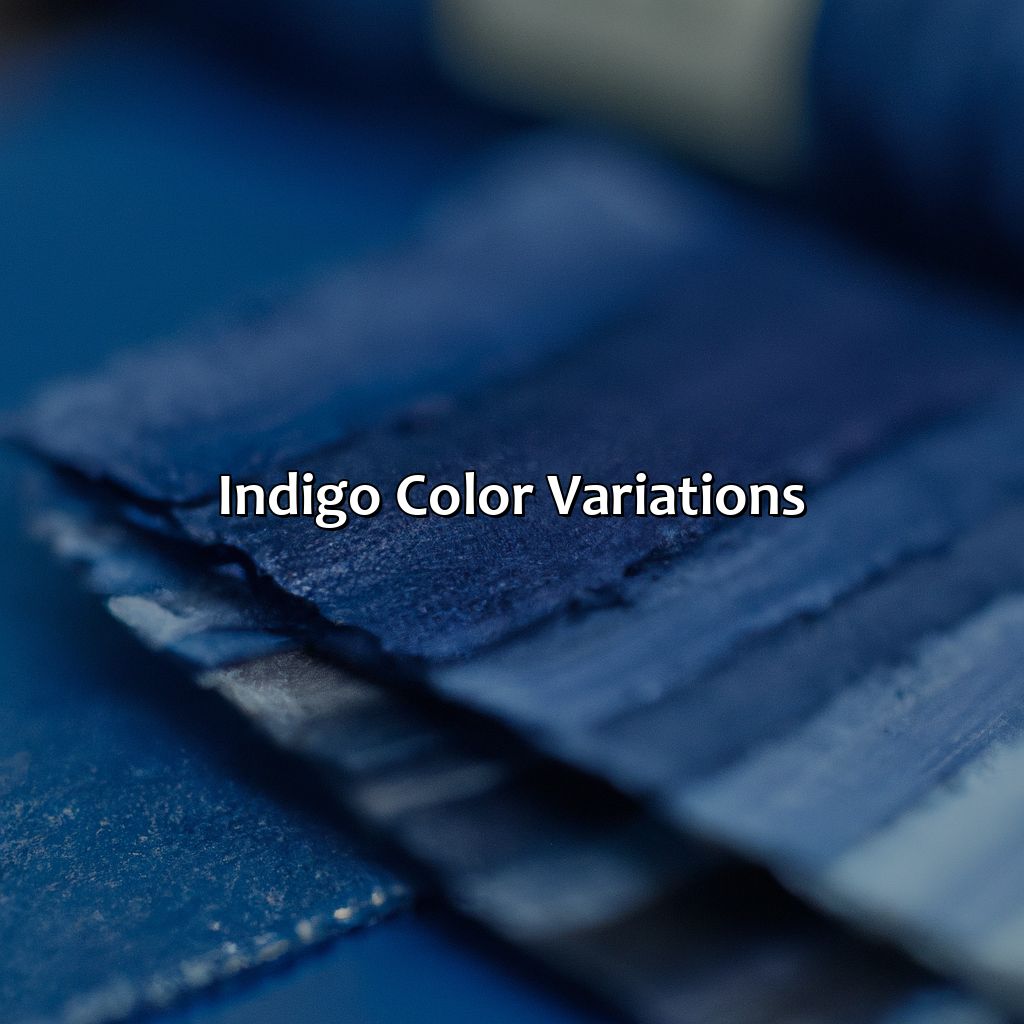
Photo Credits: colorscombo.com by Jose Torres
To get a grip on indigo’s many shades, explore its variations! Learn about its hues and tones. Experiment with indigo color combos to see how it works with other colors, such as violet. Discover how it fits into a color palette.
Shades of Indigo
Indigo Color is known for its deep blue tones, ranging from pale to intense shades. The varying depths of indigo color create a rich and captivating hue that has been used in many cultures for centuries. Shades of indigo can vary based on the dyeing technique and the location where the dye is sourced from.
Traditionally, indigo colors have been produced using natural dyestuffs. These natural techniques produce different shades of indigo color depending on factors such as the species of plant used, the climate in which it was harvested, and the method by which it was processed. Natural variations in indigo color are often celebrated in ethnic prints and patterns used in traditional clothing.
In modern times, however, synthetic dyes have become popular for creating consistent shades of indigo. Synthetic methods rely on chemical processes to reproduce indigo hues reliably while still retaining the attractive intensity and saturation levels that make it popular.
The range of shades possible with indigo color varies widely but can include subtle sky-blue tenors or almost black tones approaching navy blue. Indigo is often combined with other colors like red, orange or yellow to create beautiful textiles as well.
Overall, whether natural or synthetic dyes are used, there remains an interplay between science and art when trying to achieve desired shades of indigo.
Indigo and violet walk into a bar, and the bartender says, ‘Sorry, we don’t serve shades of blue here.’ Indigo responds, ‘Well, that’s just indigo discrimination!’
Indigo Color Combinations
Indigo hues blend beautifully with various colors, creating a distinctive color palette. The indigo color combinations are exceptional and are mainly used in modern fashion apparel and home decor.
- When paired with white or cream, indigo brings out a pop of sharp contrast.
- The combination of indigo and shades of pink, peach, or coral creates a playful yet sophisticated look.
- Indigo looks splendid when combined with metallics like gold or silver, adding warmth to the look.
- For an elegant look, one can pair greens and blues with indigo for a monochromatic approach.
- A touch of orange or yellow alongside indigo sparks an upbeat vibrancy to any decor piece or accessory item.
Indigo pairs well with other colors due to its versatility as it falls between blue and violet. Additionally, the trend for using the color palette comprising indigo-blue hues is gaining popularity in fashion and interior design.
Fun fact: Greek mathematician Pythagoras believed that Indigo was the most robust shade on the color spectrum.
Five Facts About Indigo Color:
- ✅ Indigo is a deep and rich color that falls between blue and violet on the color spectrum. (Source: Color Wheel Pro)
- ✅ The indigo color was named after the indigo plant, which was historically used to produce the dye for the color. (Source: Britannica)
- ✅ Indigo has a calming effect and is often used in relaxation and meditation practices. (Source: Color Meanings)
- ✅ The indigo color has significant cultural and spiritual significance in various traditions around the world, symbolizing wisdom, intuition, and psychic abilities. (Source: Bourn Creative)
- ✅ Indigo is commonly used in fashion and interior design, adding depth, elegance, and sophistication to any space or outfit. (Source: The Spruce)
FAQs about What Is Indigo Color
What is indigo color?
Indigo color is a deep blue-purple color that falls between blue and violet on the color spectrum. It is named after the Indigo plant which was historically used to produce indigo dye.
What are some common uses of indigo color?
Indigo color is commonly used in fabric dyeing, particularly denim. It is also used in art and design as a bold and rich color option.
Is indigo color used in traditional cultures?
Yes, indigo color has a long history of use in traditional cultures around the world. It has been used in clothing, textiles, and artwork for centuries.
How does indigo color relate to chakras?
In some spiritual practices, indigo color is associated with the third eye chakra, a center of intuition and insight in the body.
Can indigo color have different shades?
Yes, there are a range of shades that fall under the umbrella of indigo color. These can include everything from a brighter blue-based indigo to a deeper, more purple-toned indigo.
What colors best complement indigo color?
Indigo color pairs well with a range of colors, including white, cream, gray, and beige. It can also work well with bold shades like red and yellow.



